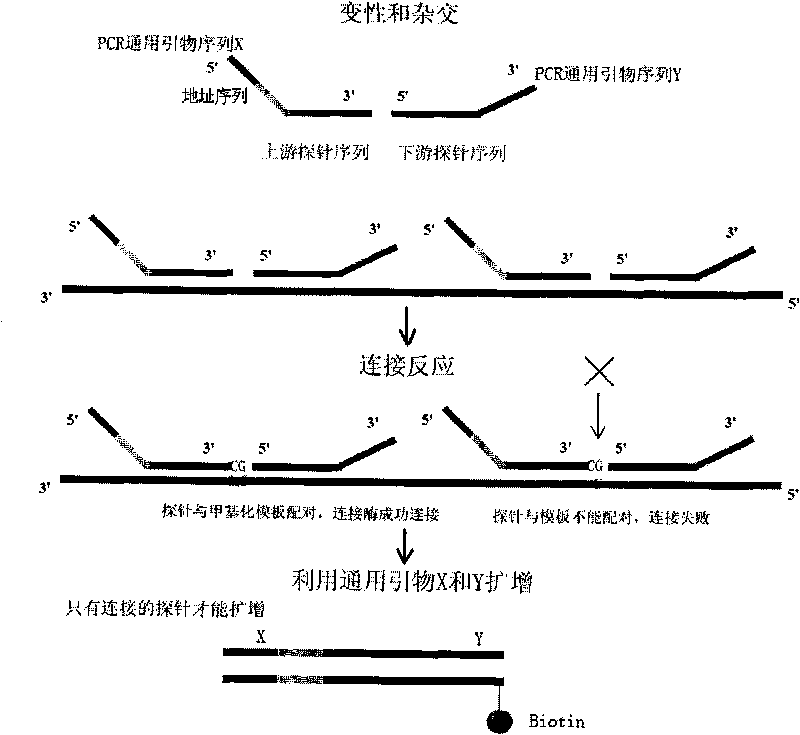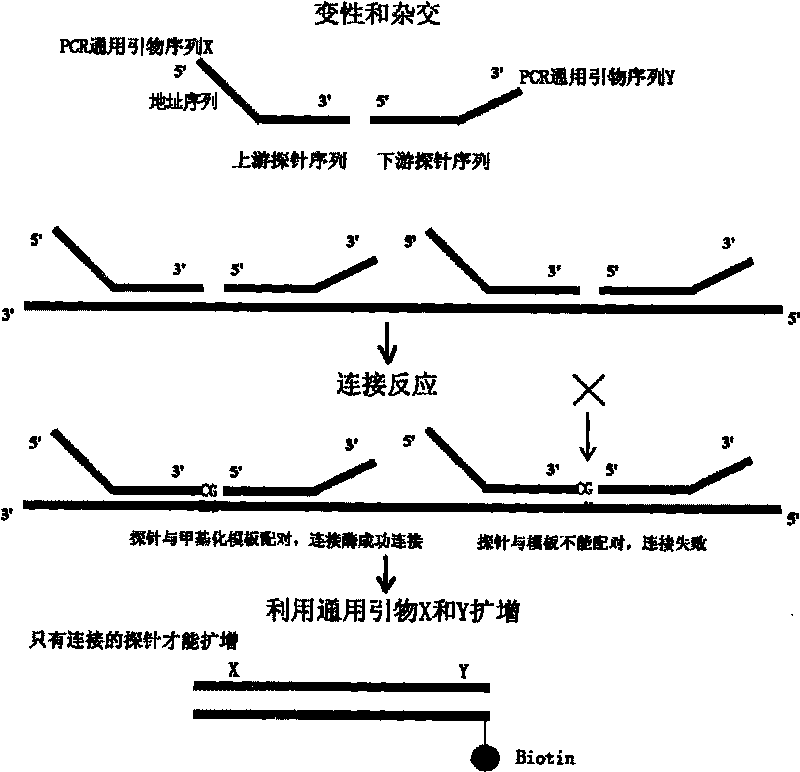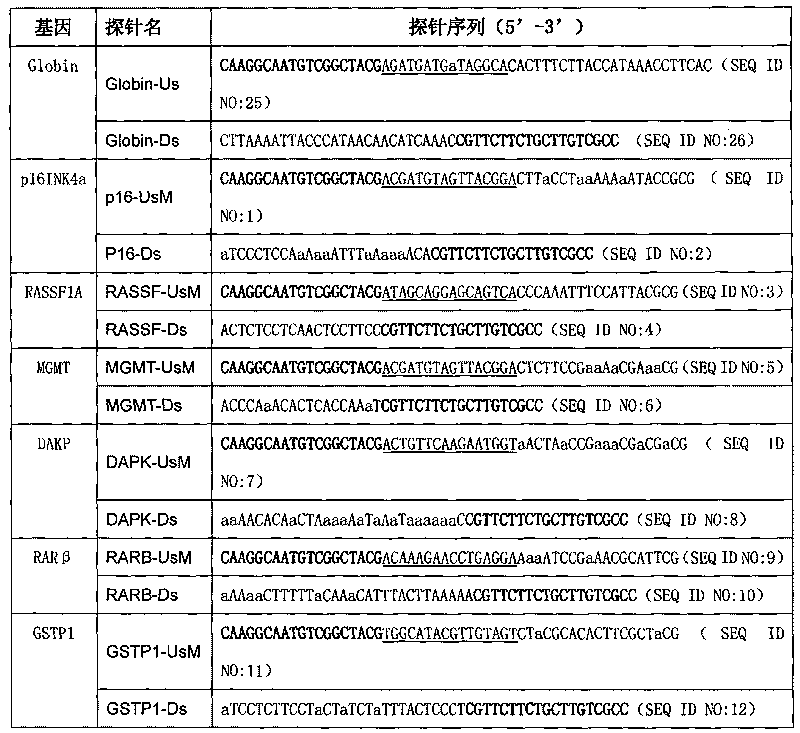Method of simultaneously testing multiple gene DNA methylation and application thereof
A methylation and multi-gene technology, applied in the field of design detection, can solve problems such as difficulty, low throughput, and inability to perform multi-gene detection, and achieve easy-to-interpret, high-throughput, and high-specificity effects
- Summary
- Abstract
- Description
- Claims
- Application Information
AI Technical Summary
Problems solved by technology
Method used
Image
Examples
Embodiment 1
[0043] Embodiment 1 Simultaneous detection of human p16 INK4a Preparation of kits for DNA methylation of seven genes, RASSF1A, MGMT, DAPK, RARβ, GSTP1, and APC
[0044] (1) Design and synthesis of gene junction probes and universal primer sequences.
[0045] Design connection probes and universal primers according to the following principles: A) Each gene needs two probes, which are called upstream probes and downstream probes according to their 5'-3' order, and the upstream probes are from 5' to 3' They are the universal primer sequence, the address sequence (each gene is different, and it is used to identify different genes when used in liquid chip detection) and the corresponding gene-specific sequence, and the downstream probes are the corresponding gene-specific sequence and universal sequence from 5' to 3' respectively. Primer sequence; B) both the upstream and downstream probes are complementary to the same strand of the DNA to be tested, and the downstream probe is fo...
Embodiment 2
[0060] The use of embodiment 2 kit
[0061] (1) Experimental method:
[0062] (1) Take 500ng of genomic DNA extracted from the surgically resected tissues of 8 lung cancer patients, and use Qiagen's Bisulfite kit to treat unmethylated C in the DNA to U, and the obtained sample is used for testing.
[0063] (2) Ligation reaction
[0064] Add 1 μL of sample as a template, 2 μL of upstream and downstream probes (1 μM for each probe in Table 1), 0.8 μL hybridization buffer (Tris-HCl 300 mM, 1.5M KCl, 1 mM EDTA, pH 8.5), 4.2 μL ddH 2 After O mixing, first 95°C for 5 minutes, then annealed at 55°C to 70°C for 60 minutes; then add 12 μL ligation system (containing 0.5 μL Taq DNA ligase and 2 μL corresponding enzyme buffer, 9.5 μL ddH 2 O) Into each hybridization reaction system, react at 54°C for 15min after mixing, and then inactivate the enzyme at 98°C for 10min;
[0065] (3) PCR reaction
[0066] Take 4 μL of the ligation product and add it to 16 μL of the PCR reaction master ...
PUM
 Login to View More
Login to View More Abstract
Description
Claims
Application Information
 Login to View More
Login to View More - R&D
- Intellectual Property
- Life Sciences
- Materials
- Tech Scout
- Unparalleled Data Quality
- Higher Quality Content
- 60% Fewer Hallucinations
Browse by: Latest US Patents, China's latest patents, Technical Efficacy Thesaurus, Application Domain, Technology Topic, Popular Technical Reports.
© 2025 PatSnap. All rights reserved.Legal|Privacy policy|Modern Slavery Act Transparency Statement|Sitemap|About US| Contact US: help@patsnap.com



